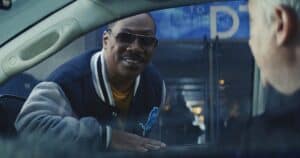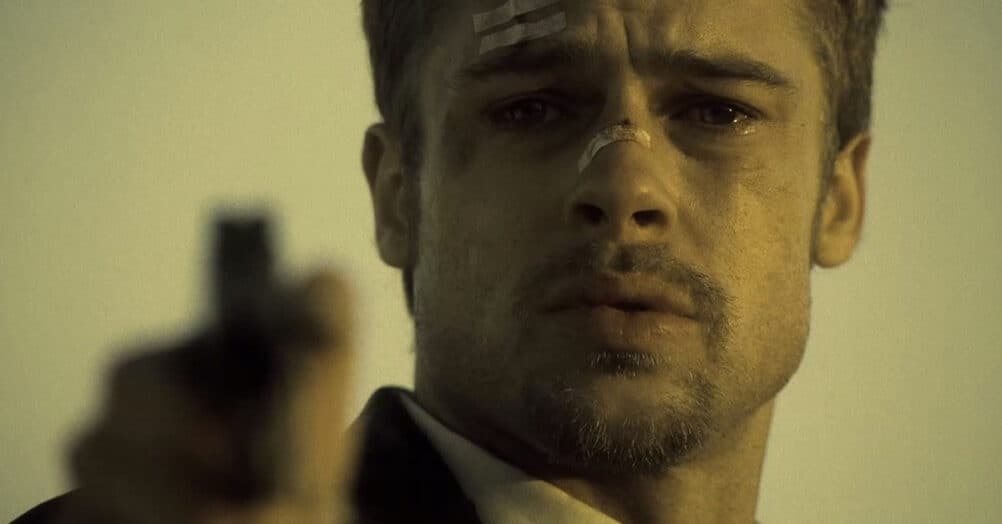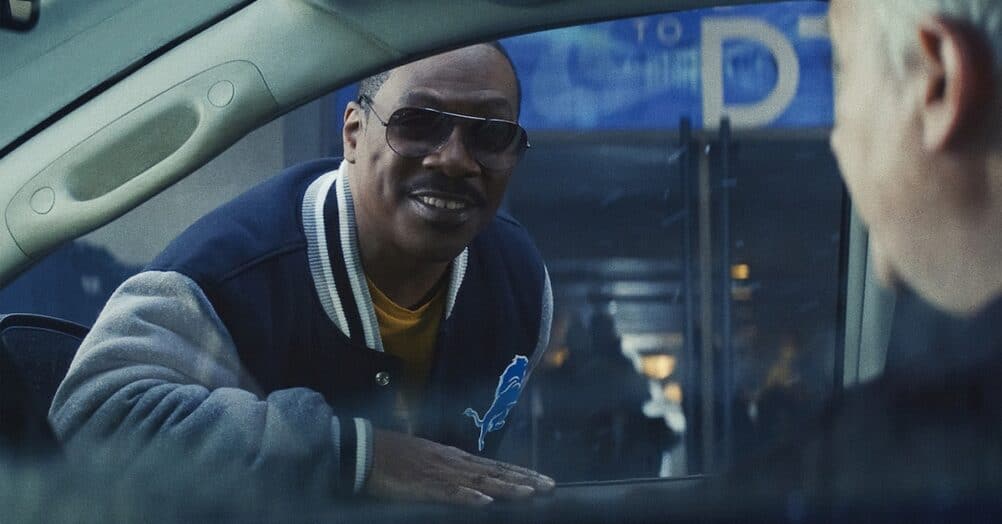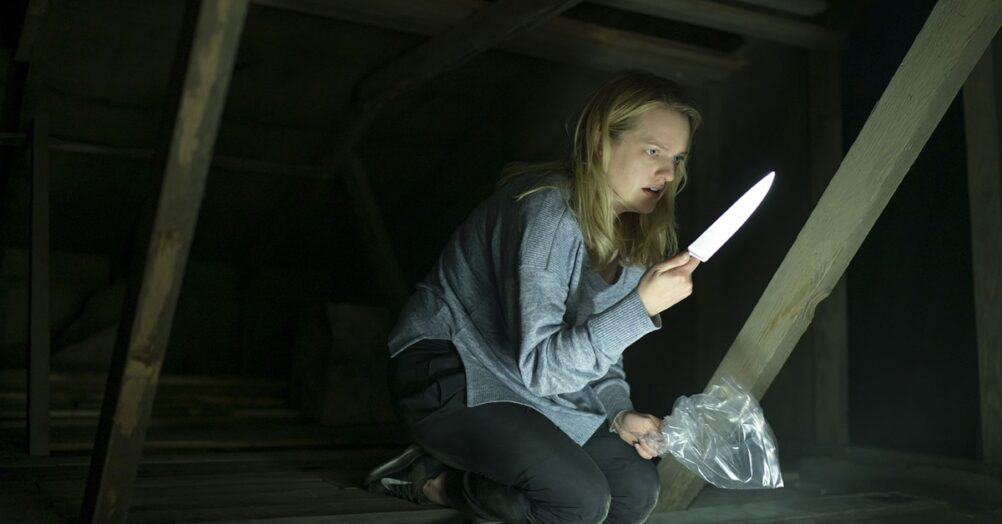
 THE DUCK KNIGHT RETURNS
THE DUCK KNIGHT RETURNS
Darkwing Duck #1-5 (BOOM!, $3.99)
By Adam Prosser
Nowadays we tend to think of “superheroes” and “cartoons” as quite distinct from each other, but for a long time that wasn’t really the case. Both were originally aimed at the same young audience, and both featured lighthearted worlds where just about anything can happen. Captain Marvel used to hang out with an anthropomorphic tiger. Plastic Man was only a couple of degrees removed from Bugs Bunny. In recent years, of course, we’ve been encouraged to take superheroes “seriously”, but the zany cartoon superhero has remained a staple of other media—such as the mid-90s Disney cartoon show Darkwing Duck.
DD hailed from an era when TV cartoons were vastly improving from the dreck of the 80s, and Disney was leading the charge with some genuinely interesting and original offerings, most of them lighthearted adventure series. Many of them featured revamped versions of classic Disney characters, like the Carl Barks-inspired “DuckTales” and “Chip n’ Dale’s Rescue Rangers”, but Darkwing Duck was a brand-new property–though technically it spun off of DuckTales, and featured a lot of the same characters, including DD’s sidekick Launchpad McQuack. In fact, for a brief moment there, it almost seemed like Disney was interested in building its own little (goofy) superhero-style universe. So now that BOOM! studios is finding success with comic adaptations of Disney properties, what better series to resurrect?
Issue #1 picks up a few years after the series, with the city of St. Canard having undergone some changes. Law and order are now maintained by “Crimebots”, products of the not-at-all-sinister Quackwerks Corporation, and crime has fallen to zero. All the cops and supervillains now work for Quackwerks, and even the Masked Mallard himself has hung up his hat and joined them, sharing a cubicle with his former archnemesis. This is all a little too close to “The Incredibles” at first (though still amusing), but with issue #5, the pieces are in place for something a little more way-out and “silver agey”, as St. Canard comes under siege by a plague of alternate-reality Darkwings.
I have to admit at this point that I’ve only seen a little of the cartoon series, so I can’t vouch for exactly how faithful this comic spinoff is, but writer Ian Brill sure seems to have nailed the tone and style of the cartoon. The real superstar, though, is artist James Silvani, whose art manages to be expressive, madcap, clear, and detailed all at once, all while keeping the characters firmly on-model.
BOOM! has, in a relatively short period of time, conquered the market on high-quality kid’s comics, and Darkwing Duck is a worthy addition to their line. If they keep going the way they are, maybe cartoon characters will one day surpass superheroes on the comic stands. But either way, this book will still have an audience.





STAN LEE AND PAUL CORNELL.. DOES THAT ADD UP TO “ZERO”?
Soldier Zero #1 (Boom! Studios, $3.99)
By Jeb D.
Gotta love Stan Lee: one of comicdom’s great characters. But he’s spent much of the past few decades demonstrating that he made his career off a few bursts of inspiration that he had in the 60’s; most of his career up to that point had been hackwork (though no more so than most of his peers), and since then, he’s launched various projects that, with rare exception, feel not like anything new, but like stale attempts to duplicate his previous successes… which, of course, was exactly what he wasn’t doing in his glory days.
So, here we are with the launch of his latest crop of superheroes for Boom! Studios. And considering that over-the-top dialog has always been Lee’s biggest weakness, Boom has taken the intelligent step of leaving the basic outline to Lee, while recruiting a top contemporary writer for the actual script: Paul Cornell, author of some of my favorite Marvel comics of the last few years. But given the resulting story of disabled veteran Stewart Trautmann and his encounter with alien technology, maybe Lee’s idea just wasn’t worth the trouble, no matter who was writing it.
It doesn’t help that the by-the-numbers superhero stuff feels seriously overbalanced by Cornell’s need to keep reminding us of Stewart’s disability, which he does so often that I wonder if he lacks confidence in his ability to make it convincing. Not being in a wheelchair myself, I can’t speak to the reality of the experience; but in this fictional context, the whispers and stares that Stewart experiences have a real “Afterschool Special” feel to them. The question isn’t whether or not disabled persons still face challenges today, it’s whether or not those challenges can be presented in a way that doesn’t feel like we’ve seen it a hundred times before: the book isn’t so much about a disabled protagonist, but about his disability. We’ve seen the frustrations of the disabled in fiction before, and how even relatively simple elements of daily life can become major challenges. What’s missing here is an approach that employs imagination, that shows us obstacles and tests that aren’t blindingly obvious (I don’t need to be in a wheelchair to understand how hard it would be to navigate stairs). And I wonder if the British Cornell even realizes that, in an America designed to be (or resemble) our own, there are legal requirements that establishments like the ones pictured here provide wheelchair access-that, in fact, no one needs an Iron Man costume from outer space to remedy it: support mandated by the Americans With Disabilities Act is just a phone call away. And I have to say that Stewart’s bitterness over his war injuries, while undoubtedly a real enough experience for today’s vets, plays more like a leftover from an 80’s-era post-Vietnam film: in other words, Cornell’s America feels very much as though he’s learned most of it from TV.
Otherwise, it’s a fairly typical origin story: a protagonist with some inherent weakness/disadvantage (nerdly science kid, crippled physician, etc.) is given great, unexpected power, in this case with alien technology: as with the Luna Brothers’ The Sword, it’s pretty obvious that the only reason to put the hero in a wheelchair is to have some fantastical artifact get him out of it.
And as for that vaunted improvement to the dialogue, well… “I got Semper Fi written through me like bacon”??? That’s every bit as tin-eared and overwrought as anything Lee ever put in the mouths of Thor or Reed Richards; plus, like, WTF– bacon??
No complaints about Javier Pina’s art, but there’s nothing particularly to recommend it either.
I have to admit that I never expected to be disappointed by a Stan Lee comic, given that my expectations are pretty low. But the addition of Paul Cornell suggested that this might be a cut above the usual; sadly, it’s nothing of the sort.


A SUPERIOR COMIC FROM MARK MILLAR?
 Superior #1 of 6 (Icon, $2.99)
Superior #1 of 6 (Icon, $2.99)
By Jeb D.
Most of the time, when you turn Mark Millar loose in his own playground, he reverts to his giggling, twelve year old self, reading comics in the wilds of Scotland, and just wanting to see stories where shit gets fucked up. But on rare occasion, Millar takes a different perspective: the grown Mark Millar, looking back at the wild enthusiasm for comics that excited and energized his younger self. Up to this point, it’s been best exemplified by 1985, his collaboration with Tommy Lee Edwards, as the Marvel Universe bleeds magic, both dark and light, into the “real” world. There’s more than a touch of that same Millar in the first issue of Superior.
Interestingly, this is the second book I’ve read this week featuring a handicapped protagonist, and the differences are striking. Obviously, a certain amount of Millar’s writing on the subject comes from experience (he suffers from Crone’s disease himself, and he’s used his independent books to raise money for disabled children), but he handles the situation so much more gracefully and effectively than does Paul Cornell in Soldier Zero: instead of cribbing “handicap problems” from what feels like cliché disease-of-the-week TV movies, Millar puts us convincingly into the mind of young Simon Pooni, who narrates the heartbreaking tale of Muscular Sclerosis taking away his promising athletic ability. He retreats into a world of movies and comic books, many of which feature the hero of all heroes, Superior. And, as is the case in such a story, through a plot device that I won’t spoil, Simon gets the chance to not simply emulate his hero, but become him.
Great fantasy wish-fulfillment, right? Well, maybe. Millar borrows ideas from a couple of sources (Big comes to mind), to show us right from the start that things aren’t going to be as simple as we or Simon expect.
It’s awfully hard to work up much excitement over origin stories after all these years, but the warmth and empathy that suffuses every page of this comic made it a pleasure to read. It’s also nicely constructed, giving you enough story meat to make it worth your time and money, while making it certain you’ll want to come back for more next issue.
Given that most of the spectacular scenes of superpowered mayhem take place in the context of movies starring Supreme, artist Yenil Francis Yu tells the main story in a more subdued manner than you might expect. I could do without the heavy inking from Gerry Alanguilan, though: I think Yu’s work looks great when shot just from pencils, and that might better match the Spielbergian tone that Millar’s going for here. That’s a small detail, though: great new stuff here from Mark Millar.




 70s HORROR, MARVEL-STYLE, EMERGES FROM “TOMB”
70s HORROR, MARVEL-STYLE, EMERGES FROM “TOMB”
Tomb of Terror #1 (Marvel, $3.99)
By Sean Fahey
I’m just happy this comic book exists, the fact that it’s a well done and entertaining read is icing on the cake for me. Confession #1: I love anthologies. Confession #2: I prefer my comic books being of the non-superhero variety, and am always jazzed when the two largest companies in the industry roll out their non-superhero characters. They have the muscle to create diversity in the market; it’s just a question of will. Well, for at least one week this month, Marvel is willing to tap into its rich catalog of horror creatures and give us a little spine-tingling entertainment, just in time for Halloween. Within the covers of Tomb of Terror rests four horror shorts, all done up in atmospheric black and white art, featuring Man-Thing, the Son of Satan, Werewolf by Night and N’Kantu the Living Mummy. There’s really not a weak piece among the bunch (rare for most anthologies), but the Man-Thing (a thoughtful commentary on racism) and Werewolf by Night (a good father and son tale) stories are the clear standouts, and while it’s hard for a comic book to “scare” you, the N’Kantu story definitely gets under your skin. My only complaint about this comic is that I’ll probably have to wait until next Halloween before I see another book like this from Marvel. It’s a shame. Morbius, Ghost Rider, Blade, Dr. Strange, Dr. Voodoo, Fing Fang Foom, Devil Dinosaur, Elsa Bloodstone (that’s just off the top of my head)…Marvel has enough in its catalog to do an ongoing horror anthology using just their own characters, and I sincerely wish they would.





THIS WEEK’S TALKING POINTS:
DOES STAN LEE HAVE ANYTHING LEFT TO PROVE?
“SOCIAL NETWORK” FANS: ARMIE HAMMER FOR SUPERMAN, RIGHT?
IF MARVEL PUBLISHED A MONTHLY OR BI-MONTHLY ANTHOLOGY, WOULD YOU BUY IT?
















Follow the JOBLO MOVIE NETWORK
Follow us on YOUTUBE
Follow ARROW IN THE HEAD
Follow AITH on YOUTUBE